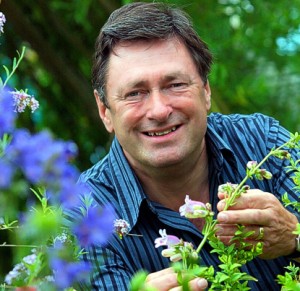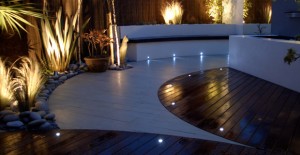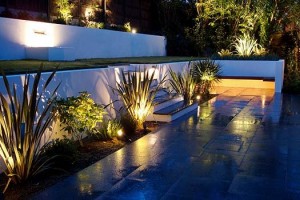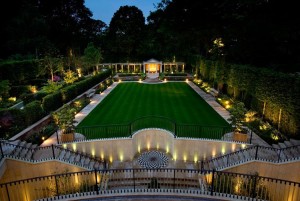Light-up your garden
Make the most of your garden at this time of year by installing outdoor lighting, says Alan Titchmarsh, as he explains the effects you can create for maximum impact.

Garden lighting can transform an ordinary plot into something magical. By deliberately positioning various types of lamps, lanterns, candles, tea-lights, spotlights and garlands of lights, you can create a wide range of eye-catching effects and extend the time you spend in the garden. As dusk descends, and twilight turns to darkness, garden lighting comes into its own. You can flood light across patios and lawns to illuminate alfresco parties, or use strategically positioned lamps and spotlights to create gleaming pools that highlight interesting features, such as a statue, attractive seat or an architectural plant.

You can also use lights to create an illuminated welcome at an entrance, make paths and steps safer to use, as well as providing overnight security. Post lights and glowing orbs are ideal for gently illuminating steps and paths, while garlands of lights look best strung around a seating area, through a pergola or between posts at the back of a border.Paths, steps and entrances can be safely illuminated by a series of lanterns and lamps, and temporary ‘party lights’ will bring the patio to life during the evening. Around my own garden, I have installed spotlights to highlight a range of architectural plants and garden features as well as provide added security – with pond and fountain lights completing the light-show after dark.
Up-lights and down-lights

Designing with lights in the garden is very much like using atmospheric lighting in the home, but outside the surrounding area will be pitch-black. You can use this to your advantage to hide unsightly features, such as bins, a compost heap or next-door’s garden shed, by a calculated manipulation of the outdoor lighting. The brighter the light the darker the black, so bear this in mind when trying to hide eyesores. Down-lighting is best for illuminating paths and steps, or for focusing a spot on an attractive feature or isolated seat. Up-lighting creates a completely different effect. If you place an up-light at the base of a silver birch tree it creates an upside-down fountain effect with a brilliant flaring trunk pointing into a sparkling canopy of white stems and shimmering leaves. Position the light behind the tree and suddenly it is transformed into a dark and somewhat sinister silhouette. Equally dramatic effects can be achieved with shrubs, statues and other garden features. For best results, obscure the light from view and set it slightly to one side to give a dramatic 3-D appearance.
Mains electricity lights
Are more powerful, so can be used to light up large areas, wall mounted lights can be very effective. Use spotlights to pick out special features round the garden. Shine a single light up a statue or the trunk of a tree, so that it glows. Use floating candles to make a pond sparkle and if you leave a fountain running, spotlight it to make the moving water stand out. The effect will be magical. Combine this with solar powered, lanterns and fairy and tea lights and the results are magical!




